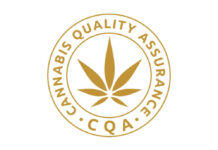The Canadian government has set 10mg of THC as the per-product limit for edibles in the second wave of legalization, set to take effect in October 2019.
Is that too low?
It depends who you ask.
“I think it’s a balanced approach given that the task force has heard a lot from U.S. states that have legalized cannabis and have said to put limits on serving size,” said Deepak Anand, CEO of CBD and medical cannabis company Materia Ventures who spent years working with Health Canada helping developing medical cannabis regulations.
“I think the challenge is that Health Canada hasn’t created a pathway for people who have been using this product and for them, and for some people, 10 mg does nothing and the fact that they’re going to have to get into multiple packages will result in a lot of packaging waste, I think is challenging.”
Anand said for the general public, “10 mg is probably a good serving size of THC for them to be taken at the time in terms of someone who is trying to start out or is a novice cannabis user. But for more cannabis users who have been around, and we have quite a few in this country by the way, it’s going to provide challenging.”
For those who have a high tolerance, it will be cost prohibitive.
“The newer states like California have come out with similar guidelines,” he noted. “I think the older states like Colorado have said they would’ve liked to have seen a different approach when they had legalized but because they’ve already gone down a certain path they can’t put the toothpaste in the tube.”
Meantime, head of the National Institute for Cannabis Health and Education said THC limits are “probably one of the most contested pieces” in the second wave of legalization.
“I kind of come at it somewhere in between public health and industry,” said Dr. Jenna Valleriani, who is CEO of NICHE Canada and is with Hope for Health, the first registered charity focused on compassionate access to medical cannabis for Canadians. “What I think is really missing is a conversation and education around what standard dose looks like. Alongside the release of these regulations we still haven’t seen very much education around these new classes of products. Not specifically on the regulations themselves, but similar to when legalization was enacted last year, there’s a lot of public education and a lot of catching up to do for the Canadian public.”
Valleriani said she understands the 10mg THC cap.
“That’s probably leaning on other jurisdictions that have legalized cannabis, mostly Colorado,” Valleriani mused. “In Colorado they actually consider the 10 mg limit a standard dose which I think is very high. I think there needs to be a more clear conversation between the standard dose versus the maximum amount of THC allowed in packaging. I think that really could be a powerful educational tool.”
Valleriani said there “could be a way to find an in between among the dissatisfaction among the industry and then the concern from the public health side, about accidental ingestion or over-consumption.”
She noted she’s seen complaints on social media about 10mg being far too low, and that many people report that their standard dose is far higher.
“If we had more clear education around what a standard dose looks like then perhaps there could be an argument to allow for more than 10 mg of THC in a package because then folks could understand, just like when you buy a case of 24 beers, you understand that’s 24 doses. A similar way of understanding and interpreting, using similar kinds of systems that we already use to moderate or influence our consumption use.”
But, Valleriani said, it “has a lot to do with peoples’ experience.”
“I think we have to remember that public policy is made for the majority and the majority of individuals in Canada are inexperienced with these kinds of products. It’s hard to hear folks tell us that they can have 25mg a dose or 100mg a dose and they don’t get affected, because that’s really the exception to the role.”
Further, Valleriani said she was disappointed not to see “any medical carve out, or a different class of products allowed for medical users.”
That’s a sentiment shared by medical user and mother Danielle Mcinnis, aka Moms Who Toke Are Dope on Twitter.
Some days I feel I’m 31 going on 51. Living with chronic pain as a young parent is challenging at times. Being a #cannamom doesn’t make me a bad mom. Cannabis helps me smile, I am able to be at my best and enjoy the little moments, pain free.#RA #EhlersDanlos pic.twitter.com/1q3i26Qzvv
— moms.who.toke.are.dope (@DanielleMc420) June 15, 2019
She said the 10 mg cap for THC is simply too low for medical patients like herself. And, she said legalization made it harder for her to get her medicine.
Mcinnis became a medical user after being diagnosed with Ehlers–Danlos syndrome which, a rare genetic disorder.
“I have the third kind where my bones pop out, dislocate or break easily,” Mcinnis told BotaniQ Magazine. “I found that out because my knee dislocated a month before giving birth and my birth ended up being premature because of it all. So it was all a big, big thing. I found out later on that I had arthritis.”
Soon after, she received her “golden ticket” – her medical card.
And what she’s found is she needs far more than 10 mg of THC in an edible product to see results.
“10mg is great for recreational and first time users but I feel like they’ve forgotten the medical users,” Mcinnis told BotaniQ Magazine. “This is why it’s legal in the first place is because of us medical users and our advocacy. So for them to forget about us and to just think that 10 mg is an okay amount for people who deal with chronic pain is absurd. You have to start somewhere but I really hope that eventually they see that there is a need for a medical dose as well as the recreational.”
She hopes to see the government establish separate licenses for recreational and medical producers of edibles down the road, and different limits for the two categories.
“For cancer patients, people that really need that specific cannabinoid or CBN in order to sleep at night,” she said. “It’s important for there to be companies that are using specific cannabinoids as well in the edibles so that people can get what they need from them.”
The cost to dose herself under the impending regulations capping products at 10 mg would be massive, said Mcinnis.
“And imagine the calories,” she laughed.
Visit cannaparents.ca to learn more about Mcinnis.



















